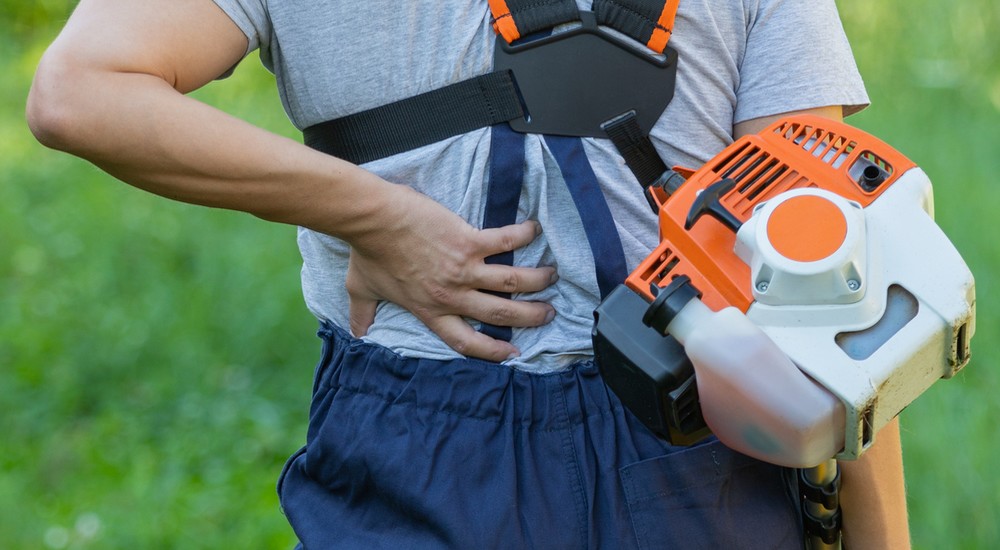How to build an effective accident prevention policy in landscaping trades
Physical injuries at work are a real problem for landscaping trades. However, there are a host of ways to keep employees healthy!

The physical side of landscaping is a real problem for the sector and one of the reasons why students hesitate to enter the profession. However, physical injuries are avoidable in landscaping and even more so due to the latest innovations and an effective accident prevention policy. There are a host of ways to keep employees healthy, as EchosPaysages discussed during their conference on “How to prevent and manage the ageing of professionals?” at Paysalia 2019.

Sourcing problems and targeting preventive actions
Correct accident follow-up reports are the starting point for effective prevention of main injuries. This includes the analysis of work-related accidents and diseases, statistics, work-related risks reports… It is obvious that any landscaping company in which occupational accidents occur frequently has an underlying problem which needs to be solved!
Feedbacks from staff are also a mine of information. Basically, these are mission reports or unofficial remarks but other sources include the minutes of group meetings (especially from training sessions) where recurring issues - work-related pain, for example - were spontaneously discussed.
Multiple ways to prevent burnouts in landscaping trades
Management
Managers must apply the corporate accident prevention policy by relaying information between top management and employees and co-constructing operational tools (like information datasheets, for example).
If the company introduces daily stretching exercises, for example, managers must set the example and encourage their personnel to continue these initiatives over time. It is not always obvious for a manager, but troops need remotivating regularly and, to achieve the objective, everyone must be headed in the same direction!
Human Resources
The Human Resources department can set up an early warning system by involving managers and the occupational medicine service. Human Resources know the difficulties confronted by the employees, their skills and their career to date – all clues as to what action plans to adopt. These may include training sessions, changes in the way jobs are done, job mobility and/or reconversion.
They can set up a shared skills cursus when recruiting (what the candidate knows, needs to learn or needs to consolidate) which, when the time is ripe, will facilitate the transfer of landscaping staff to other services before physical distress causes irreversible damage.
Specific preventive actions
Preventive actions include training, physical activity risk prevention courses and “hands-on” physical training actions like warm-ups, physiotherapy, etc.
Actions also include initiatives related to the reduction of work-related pain like the electrification of machines, the reduction of noise levels, better PPE, etc.
Cultural change in the landscaping trades
The time when the smallest dead leaf on the roadside had to be swept up is over! Well, in theory at least, because in practice change comes slowly. However, a weed here and there is a win-win situation. For landscapers, it cuts out repetitive movements - the main cause of musculoskeletal damage – and nature becomes a little more natural and biodiversity thrives.
And the same is true of warm-ups even if some employees may be shy in agreeing to do them in front of bystanders or colleagues.
New powerful tools
And last but not least, year by year, the landscaping sector invents new ways to keep its professionals healthy with easier-to-use and safer tools. Batteries (like that sold by Pellenc, rewarded with a Paysalia Innovation Trophy in 2017) run for longer and are lighter than standard batteries. Other completely new landscaping innovations, such as exoskeletons (an Exhauss technology rewarded with a Paysalia Innovation Trophy in 2019) are now on the market.
You can see all these landscaping innovations at Paysalia!
A real-life example of a corporate accident prevention policy in a landscaping firm
Chazal SAS has a lot of experience in professional risk management and gave a conference
focused on two major aspects:
- the integration of new tools
Chazal SAS believes in landscaping innovations such as mechanizing tasks like hedge trimming and mowing and trains its teams in their use. The main emphasis is on on-site safety. New employees, who as often as not were not taught safety at school, are trained by the company and all employees do warm-ups led by a coach.
Read also: Innovative landscaping material aims to boost health and safety at work
- psychosocial risk management
All team leaders should be trained in psychosocial risk management. To reduce the workloads of site managers, their number is doubled and the teams are reinforced during difficult phases of the works. Site reports are dematerialized to save time and improve transparency and in-house communications were improved by installing screens to optimize information flows.
Physical damage reduction is essential in all landscaping companies and an opportunity to build sector attractiveness. By reducing work-related pain with an effective accident prevention policy, the sector keeps experienced collaborators longer and also projects a better image of landscaping trades to young people!
© Photo credit: Ocskay Mark / Adobe Stock

